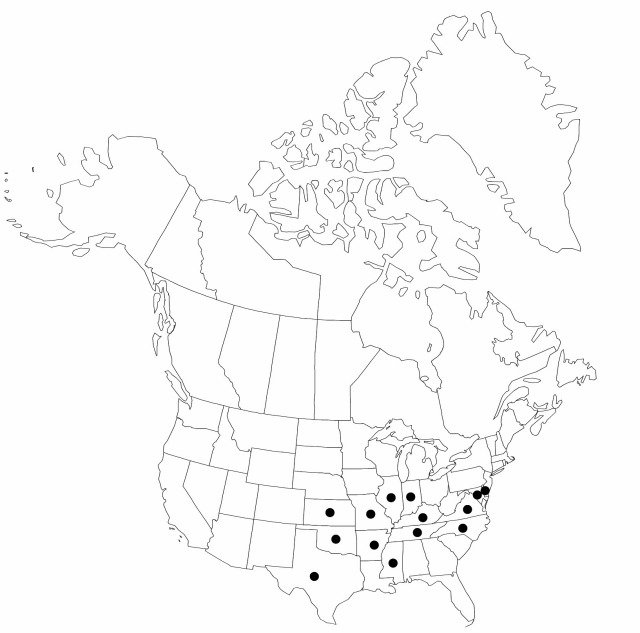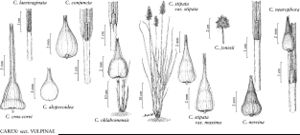Difference between revisions of "Carex oklahomensis"
Torreya 14: 126. 1914.
FNA>Volume Importer |
FNA>Volume Importer |
||
| Line 51: | Line 51: | ||
|publication year=1914 | |publication year=1914 | ||
|special status= | |special status= | ||
| − | |source xml=https://jpend@bitbucket.org/aafc-mbb/fna-data-curation.git/src/ | + | |source xml=https://jpend@bitbucket.org/aafc-mbb/fna-data-curation.git/src/f6b125a955440c0872999024f038d74684f65921/coarse_grained_fna_xml/V23/V23_464.xml |
|genus=Carex | |genus=Carex | ||
|section=Carex sect. Vulpinae | |section=Carex sect. Vulpinae | ||
Revision as of 20:08, 24 September 2019
Plants with basal sheaths of previous year not persistent. Culms not easily compressed, angles obtuse, to 80 cm × 2 mm, glabrous. Leaves: sheaths of proximal 2–3 leaves bladeless, fronts smooth, indistinctly linearly veined, forming tubular extension distal to sheath-blade junction, apex colorless, fragile, U-shaped, entire; ligules obtuse, 4 mm, free limb to 3 mm; blades not epistomic, to 75 cm × 5 mm. Inflorescences densely spicate, elongate, with 15–20 distinguishable branches, 5–10 × 2.5 cm; proximal internode to 10 mm. Scales pale brown with hyaline margins. Perigynia pale brown with red-brown veins, 10–12-veined abaxially, 7-veined adaxially, to 5 × 1.7 mm, base distended proximally, cordate; stipe to 0.2 mm; beak to 2.5 mm, serrulate. Achenes broadly ovate, 1.7 × 1.5 mm; stalk to 0.15 mm; persistent style base cylindric, 0.15 mm.
Phenology: Fruiting May–Jun.
Habitat: Seasonally saturated or inundated soils in wet meadows, marshes, alluvial bottomlands
Elevation: 0–1500 m
Distribution

Ark., Del., Kans., Ky., Ind., Ill., Md., Miss., Mo., Okla., N.C., Tenn., Tex., Va.
Discussion
Although Carex oklahomensis resembles C. stipata in inflorescence and perigynium characteristics, C. oklahomensis is distinguished by its firm, obtuse-angled stems, bladeless basal sheaths, and tubular extension of the smooth sheath fronts.
Northern and eastern records of Carex oklahomensis are mostly recent and the species may be increasing its range.
Selected References
None.
